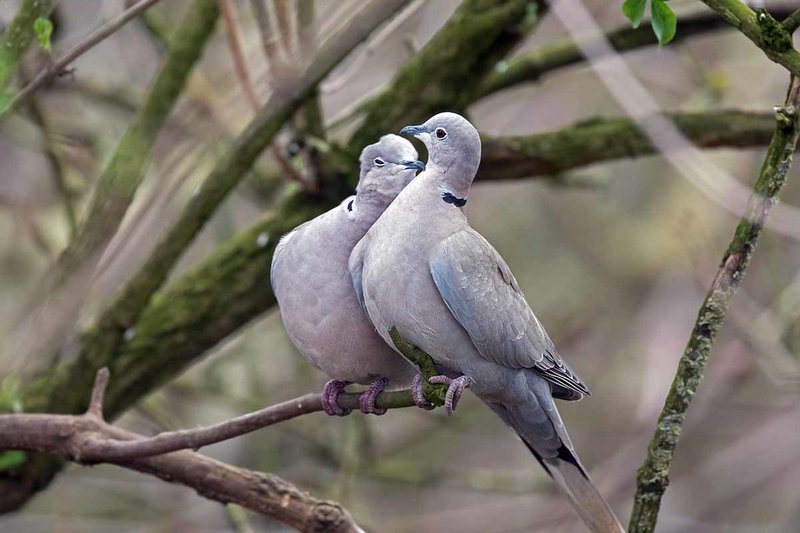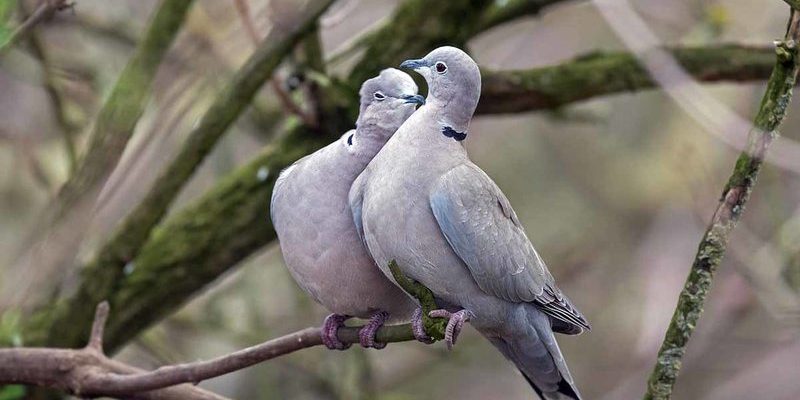
One of the things that makes the Eurasian collared dove stand out is its flexibility in love. They can adapt to different environments and are often found in urban as well as rural settings. This adaptability plays a crucial role in their mating behaviors, allowing them to thrive in various habitats. So, let’s dive into the enchanting world of Eurasian collared dove courtship, where we’ll explore everything from their playful preening to the soft sounds they use to woo their potential mates.
What’s Love Got to Do with It? Understanding Courtship
Let’s kick things off with the basics. Courtship among Eurasian collared doves isn’t just casual flirting—it’s a full-fledged display to attract a mate. The male dove takes center stage, puffing up their bodies and strutting around to show off their vibrant feathers. You might think of it as a peacock showing off its tail, but with a gentle charm. This behavior is all about signaling health and vitality to potential partners.
During this courting phase, males often do a little dance. They’ll bob their heads and even perform a soft, fluttery flight, which is pretty mesmerizing to watch. This isn’t just for show; each movement sends a message, reminding females of their fitness and desirability. Now, you might be wondering, “How do females respond to all this?” Well, they tend to watch closely and evaluate these elaborate displays, looking for signs of a strong mate.
Women might not always pick the loudest suitors, though. Sometimes the quiet one with the most graceful moves steals the show. The outcome? A genuine connection based on mutual attraction—and perhaps a bit of competition among the males!
Song of the Heart: Vocalizations of the Eurasian Collared Dove
Ah, the serenade! One of the most captivating aspects of the Eurasian collared dove’s courtship is their vocalizations. Their distinctive cooing is not just a pleasant sound; it serves as an essential part of their mating ritual. When a male doves croon, they’re actively advertising their presence and availability to females nearby.
The sound itself is a series of soft coos, often described as “coo-COO-coo.” The beauty of this call lies in its soothing quality, setting the mood for romance. You might picture it as a gentle serenade that floats through the air, inviting the attention of a female. It’s worth noting that a strong, melodious song can significantly influence a female’s choice. Just like humans, female doves have their preferences when it comes to musical talent!
Interestingly, these birds are quite chatty even outside of courtship. You may notice them cooing to each other throughout the day, reinforcing their bond and communication. This constant interaction helps solidify relationships, much like how friends catch up over coffee to stay connected.
The Dance of Preening: Grooming Rituals
Once the initial courtship phase kicks off, doves engage in an endearing behavior called preening. Grooming isn’t just about looking good; it’s a bonding ritual that helps strengthen the couple’s connection. Think of it as a partner brushing your hair or helping you adjust your outfit before a date—lovely, right?
In this case, male and female doves take turns grooming each other, which creates a sense of trust and intimacy. During this process, they focus on each other’s feathers, removing any dirt or debris. It’s a mutual act of care that furthers their emotional bond.
You might find it heartwarming to watch, as it showcases their affection. In addition to developing that close connection, clean feathers are crucial for their health and ability to fly effectively. So, in essence, this grooming ritual serves dual purposes: promoting romantic ties and ensuring a dove’s well-being.
Nesting and Building a Future Together
Once a pair has established their bond through courtship and preening, they move on to an equally important phase: nesting. The Eurasian collared dove is known for its simple, yet effective, nest-building skills. They often choose sheltered locations, like tree branches, building their nests using twigs, leaves, and other materials they can find nearby.
This part of their relationship resembles planning a future together. The choice of a nest site reflects not only their reproductive intentions but also their desire for a safe space to raise young doves. Once the nest is completed, the female typically lays two eggs, and both parents share the responsibility of incubation. Honestly, it’s quite a team effort!
During this time, the couple remains close, with a steady exchange of soft coos that help keep their bond strong. It’s a delightful sight to see them nestled together, protecting their soon-to-be chicks while also nurturing each other.
Challenges and Adaptability in Mating
Life isn’t all sunshine and cooing songs. The Eurasian collared dove faces challenges, just like many other bird species. Habitat loss and environmental pressures can affect their ability to find suitable partners. However, their adaptability shines through in these circumstances.
These doves are quite resilient, often thriving in urban landscapes where many other species struggle. Urban environments provide ample food sources and nesting sites, which allow them to continue their courtship behaviors even amidst the bustle of modern life. It’s like they’ve learned to dance to the rhythm of city life rather than the wild.
Another interesting aspect is that if a mate is lost, a male collared dove will quickly seek another partner. This ability to adapt ensures that they can keep the cycle of life going, reflecting a profound commitment to survival and reproduction.
As we wrap up our exploration of the Eurasian collared dove courtship and mating rituals, it becomes clear that these birds embody a captivating mix of romance, resilience, and adaptability. Their courtship behaviors—from vocal serenades to gentle preening—showcase the beauty of their relationships. It’s not just about finding a mate; it’s about building a lasting bond that can weather the storms of life.
Next time you hear that soft cooing in your backyard or catch sight of these lovely doves preening together, remember the story behind their connection. These rituals are more than just instinct; they’re a dance of love that plays out in the world around us every day.

